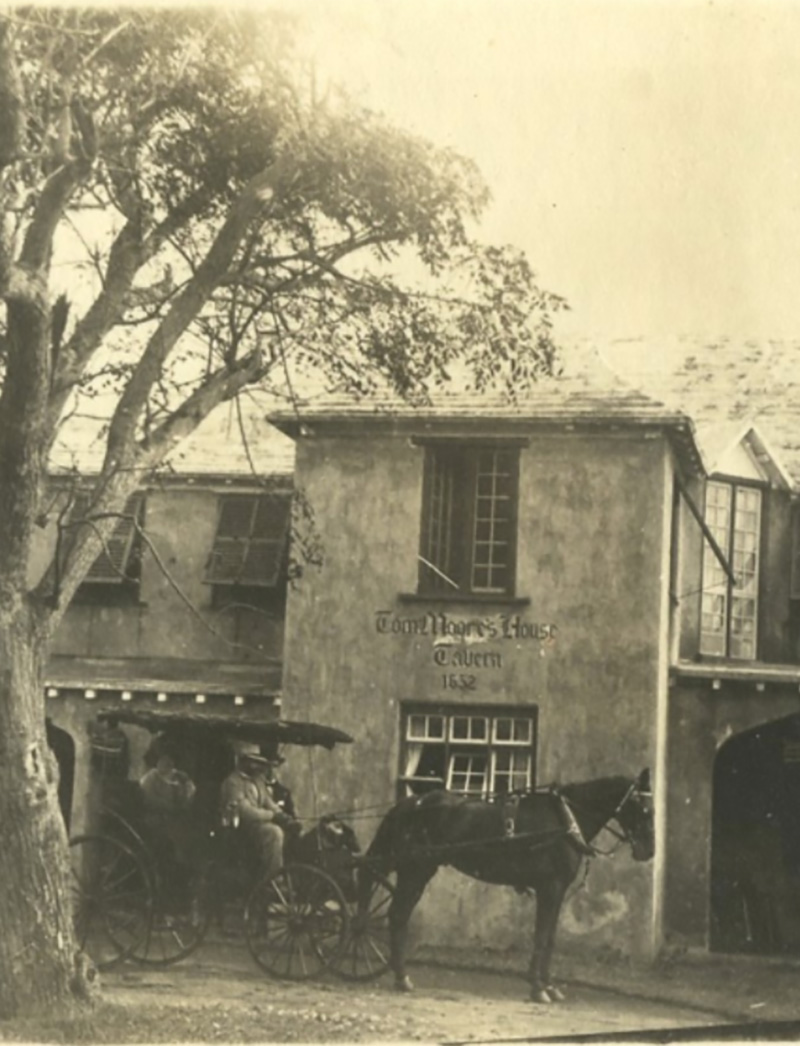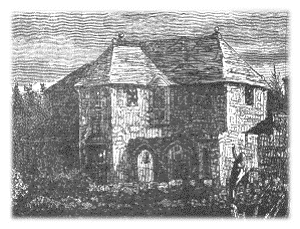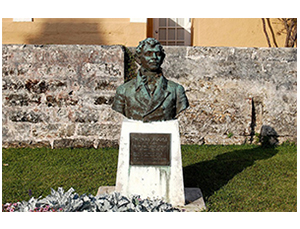
History
Tom Moore's Tavern was built in 1652 as a private home for a Mr Walsingham. In those days it was known as Walsingham House, from the Walsingham area in which it stood. The property was owned by Samuel Trott when Tom Moore, the Irish poet, came to Bermuda in 1804 as Registrar of the Court of Vice-Admiralty. This beautiful 17th Century building is in its original state. Perhaps most beautiful are the casement windows and dining room fireplace. The fireplace was considered to be so unusual that it was reconstructed in England for the Wembley (London) Exhibition in 1925.
The house became a Tavern over 200 years ago and records show that more than 3 million people have wined and dined within these walls. Read more about Thomas Moore on Wikipedia

Tom Moore
Thomas Moore was born in Dublin on the 28th of May 1780. He was an Irish poet, singer, songwriter, and entertainer, now best remembered for the lyrics of "The Minstrel Boy" and "The Last Rose of Summer". As Lord Byron's named literary executor, along with John Murray, Moore was responsible for burning Lord Byron's memoirs after his death. From a relatively early age Moore showed an interest in verse, music and other performing arts. He sometimes appeared in musical plays with his friends and at one point had ambitions to become an actor. Moore attended several Dublin schools including Samuel Whyte's English Grammar School in Grafton Street where he learned the English accent with which he spoke for the rest of his life. In 1795 he graduated from Trinity College, Dublin.

Walshingham House
Walsingham House was featured in an article on Bermuda in Harper's Weekly of October, 1873 which read as follows ... "Walsingham House was in 1804, the residence of Thomas Moore, the poet. It is a quaint old gabled edifice, standing alone, buried in the dark cedar woods, washed on one side by the sea, and on the other by a tiny salt lake set in a bed of rock. The surface is littered with the dead leaves of mangroves, which spring out of it on their arching stems. The cedars, dead and silvered, or green and living, rise from an impenetrable tangle of fern and brush-wood. How they grow at all is a wonder, for there is no soil, only rock, jagged and sharp as the teeth of a saw. Innumerable fish, rainbow-tinted, dart through the dark waters, and here and there a turtle floats leisurely along."

The Tavern WW2
“Walsingham”, famous for hospitality, belonged for generations to the descendants of Perient Trott, an English merchant who in 1664 was appointed as a local representative of the London-based Bermuda Company which established the first permanent settlement here 52 years earlier. “The house stands, looking out across Castle Harbour, on a neck of land traversed by the highway from Hamilton to St. George’s,” said Thomas Moore biographer J.C.L. Clark writing in 1909.
“Through an avenue of cedars one approaches the ancient homestead, near the shore, between two mangrove-bordered lakes."
The grounds of the property are now the site of the Walsingham Nature Reserve — or Tom Moore’s Jungle as it is more commonly known in Bermuda.

Poetry and monument
In his poetry Moore was enthusiastic about the beauties of Bermuda and his affections for Nea Tucker, a local married woman.
The calabash tree to which Tom Moore makes frequent reference in his songs and poems still exists and is some 200 yards from the Tavern. It was here that his friendship with Nea Tucker began and where he wrote many of his well known works. The day-light is gone — but, before we depart,
Here’s a brimmer of love to the friend of my heart,
To the friend who himself, is a chalice, a bowl
In which Heaven has pour’d a rich bumper of soul!
Twas thus, by the shade of a calabash-tree,
With a few, who could feel and remember like me.
The charm, that to sweeten my goblet I threw.
Was a sigh to the past and a blessing on you!